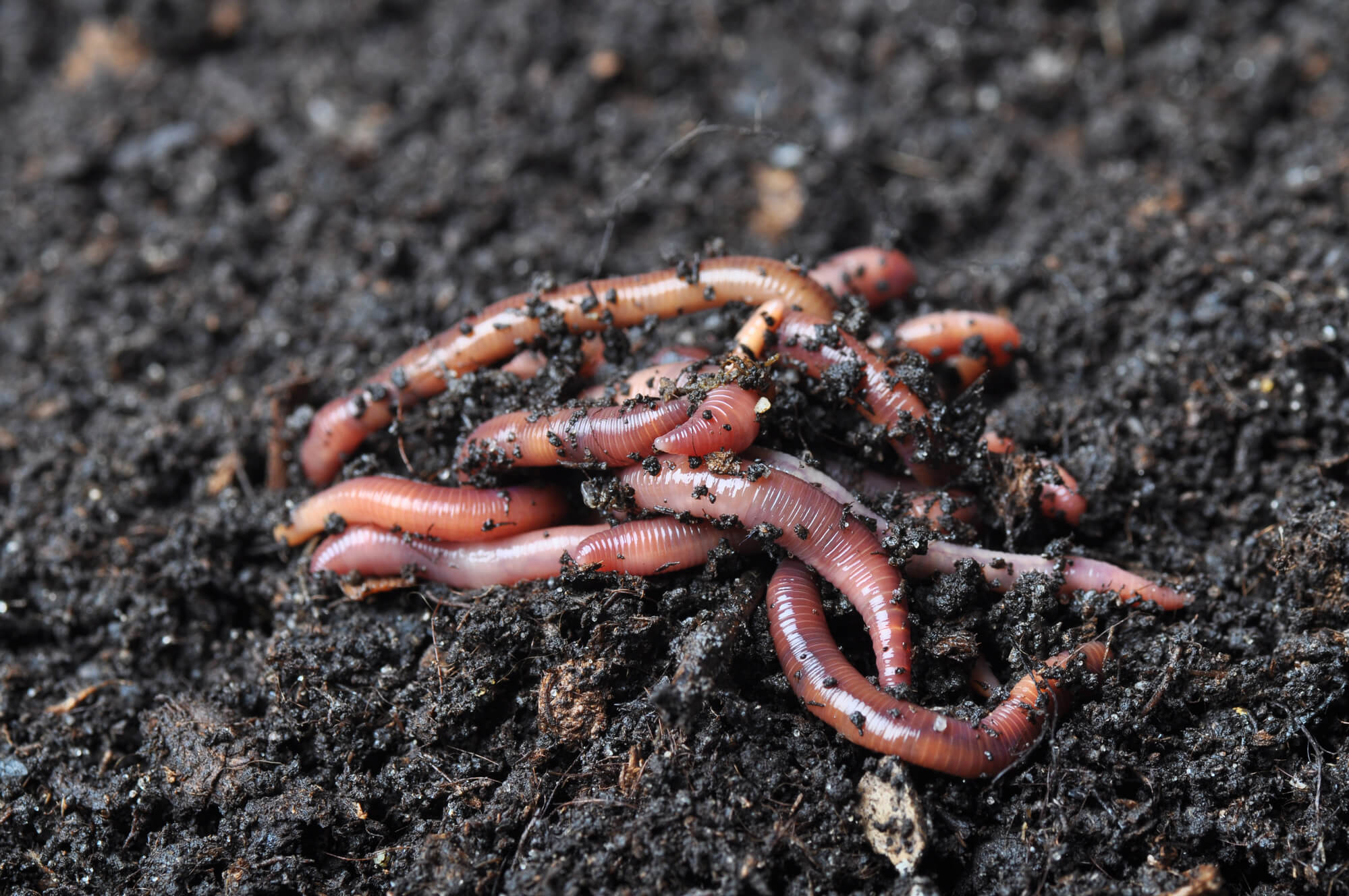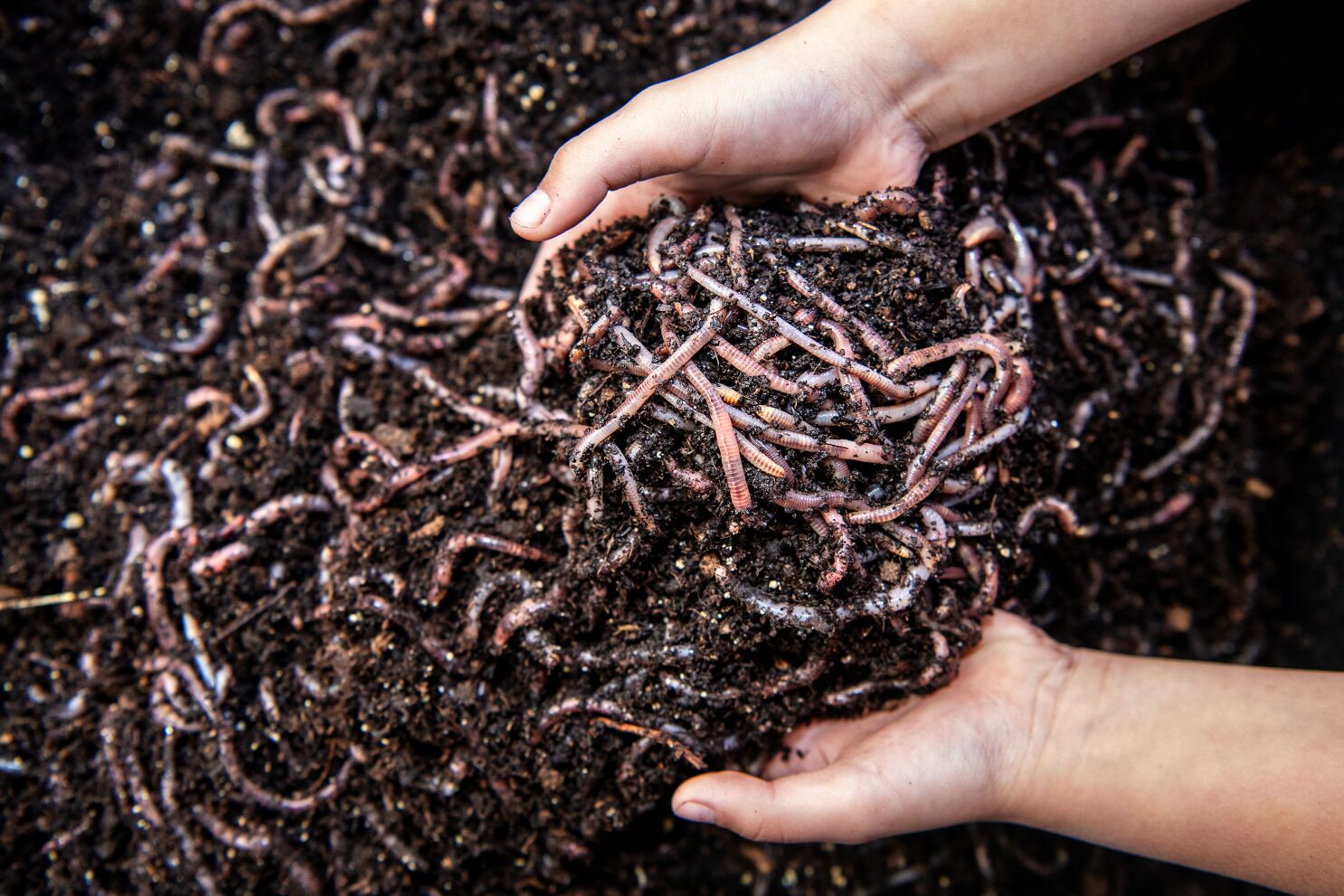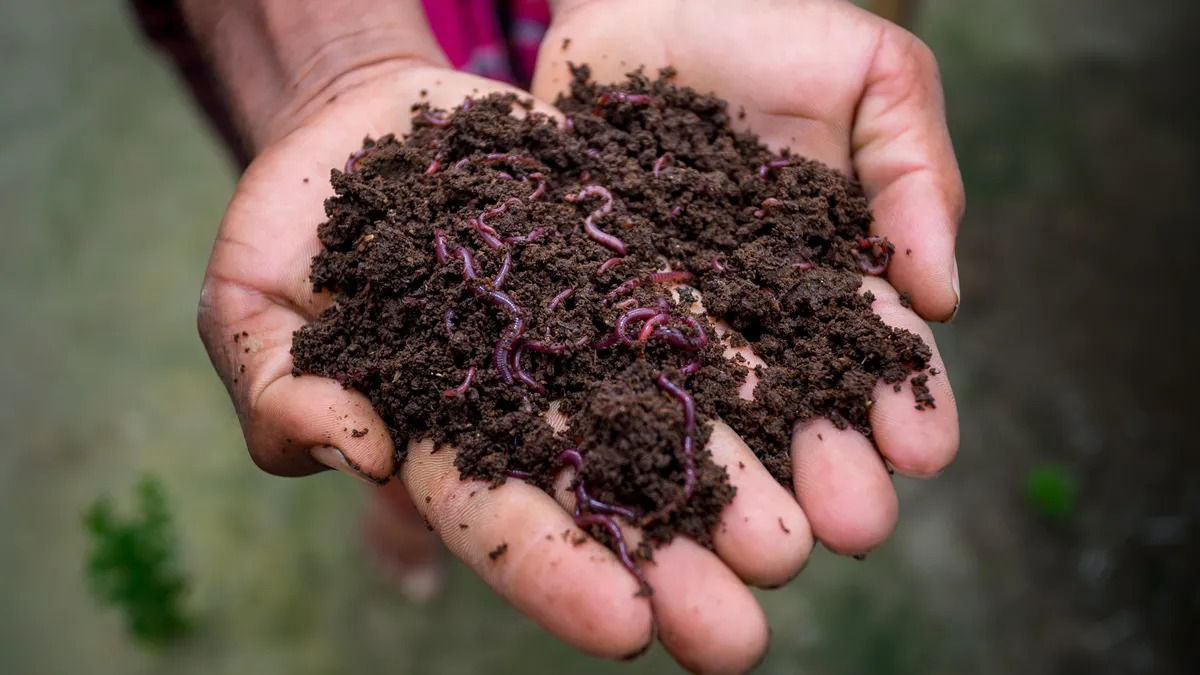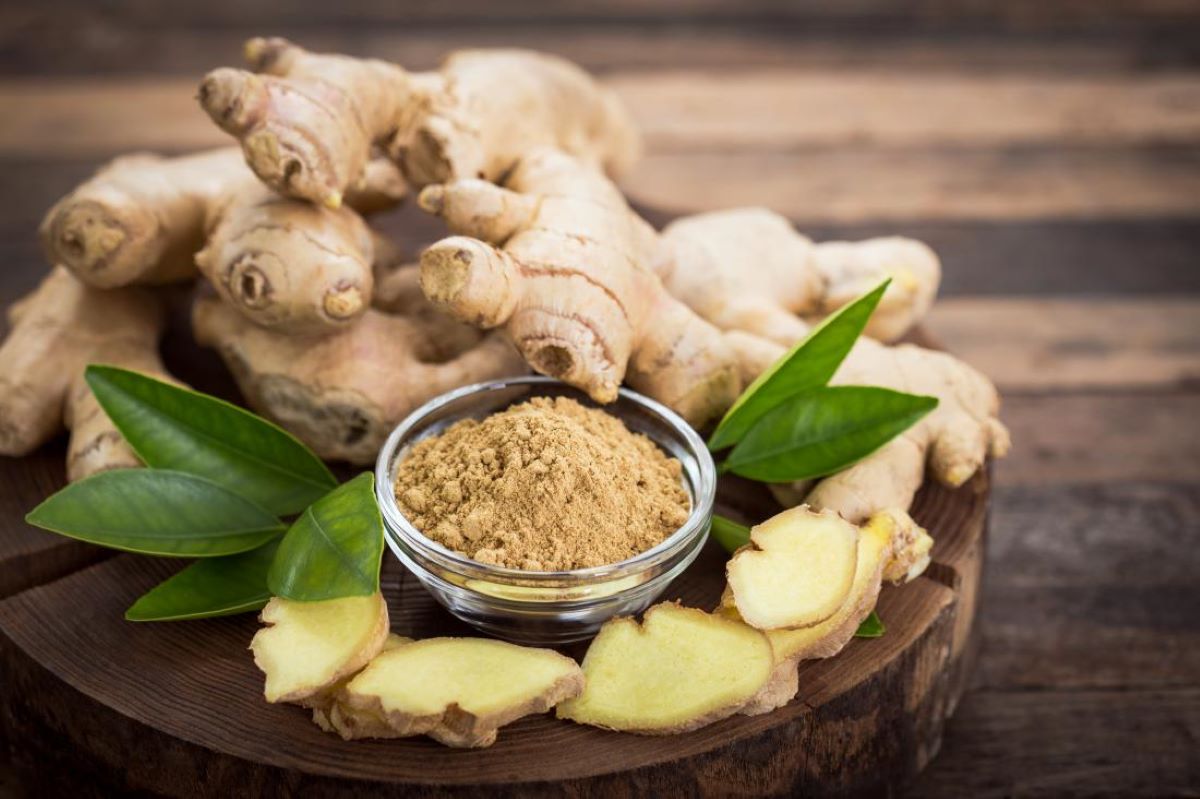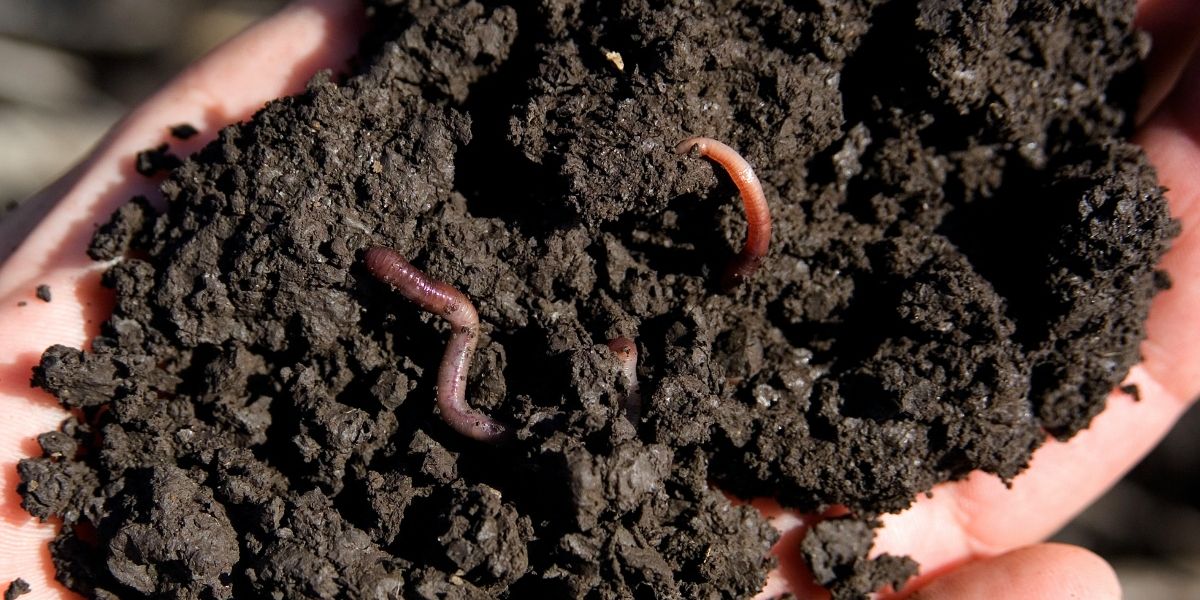Home>Gardening Basics>Understanding Soil>How Do Worms Help The Soil


Understanding Soil
How Do Worms Help The Soil
Modified: February 6, 2024
Discover the role of worms in soil health and learn how they enhance the soil structure and nutrient availability. Gain a better understanding of the benefits that worms provide for optimal soil conditions.
(Many of the links in this article redirect to a specific reviewed product. Your purchase of these products through affiliate links helps to generate commission for Chicagolandgardening.com, at no extra cost. Learn more)
Table of Contents
Introduction
Welcome to the fascinating world of soil and the remarkable creatures that inhabit it. While soil may seem like a mundane and unremarkable part of our environment, it plays a crucial role in supporting life on Earth. From providing essential nutrients to supporting plant growth, soil health is paramount to the sustainability of our planet’s ecosystems.
One of the key contributors to soil health and fertility is the humble earthworm. These seemingly insignificant creatures are actually nature’s unsung heroes when it comes to improving soil quality. In this article, we will explore the vital role that worms play in enhancing soil structure, nutrient cycling, and overall soil health.
Worms, particularly earthworms, are a vital link in the complex web of life below our feet. Their actions and behaviors have a profound impact on the health and productivity of our soils. By burrowing through the soil, digesting organic matter, and leaving behind their castings, worms actively transform and enrich the soil. Their activities improve soil structure, increase nutrient availability, enhance water infiltration, and facilitate the decomposition of organic materials.
Understanding the significance of worms in soil health is essential for farmers, gardeners, and environmental enthusiasts alike. By harnessing the incredible power of these soil-dwelling creatures, we can work towards building healthier, more sustainable agricultural systems and natural environments.
So, let’s delve into the world of worms and discover the incredible ways in which they contribute to the magic that lies beneath our feet.
Importance of Soil Health
The importance of soil health cannot be overstated. Soil is a precious resource that sustains life on Earth by providing the foundation for plant growth, acting as a reservoir for nutrients, regulating water infiltration and retention, and supporting a diverse array of organisms.
Agricultural productivity heavily relies on healthy soil. Healthy soils ensure optimal nutrient availability, promote root development, and improve water-holding capacity, leading to higher crop yields. In addition, healthy soils have better resistance to erosion and can retain more water, making them more resilient to drought conditions.
Soil health is not limited to agriculture; it impacts our environment as a whole. Healthy soils help to filter and purify water as it percolates through, reducing the risk of groundwater contamination. They also play a crucial role in carbon sequestration, helping to mitigate climate change by storing carbon dioxide from the atmosphere.
Furthermore, soil health is directly linked to biodiversity. Numerous organisms, such as earthworms, insects, bacteria, and fungi, call the soil their home. These organisms form intricate relationships with plants, aiding in nutrient cycling, pest control, and disease suppression. A healthy soil ecosystem supports abundant and diverse life forms, contributing to overall ecological balance.
Unfortunately, soil degradation is a significant problem worldwide. Industrial farming practices, deforestation, and overuse of chemical inputs have depleted soils of essential nutrients, eroded topsoil, and disrupted the delicate microbial communities that sustain soil health.
Restoring and maintaining soil health is crucial for long-term sustainability. This is where worms play a vital role. Their presence and activities contribute to the overall well-being of the soil ecosystem and help restore its functionality.
By recognizing the importance of soil health and adopting practices that promote its well-being, we can ensure the long-term productivity and sustainability of our agricultural systems, protect natural environments, and safeguard the future of our planet.
Role of Worms in Improving Soil
Worms are an integral part of the soil ecosystem, playing a crucial role in enhancing soil health and fertility. Their activities contribute to the improvement of soil structure, nutrient cycling, soil aeration, and decomposition of organic matter.
One of the primary ways worms improve soil is through their burrowing activities. As worms tunnel through the soil, they create channels that enhance soil structure. These channels allow for better water infiltration and air circulation, reducing the risk of soil compaction and enhancing root penetration.
Worms also contribute to nutrient cycling in the soil. As they consume organic matter, such as leaf litter and decaying plant material, worms break it down in their digestive system. This process, known as vermicomposting, leads to the production of nutrient-rich worm castings. These castings are like nature’s fertilizer, packed with essential nutrients that are readily available to plants. As worms move through the soil, they distribute these castings, enriching the soil with organic matter and nutrients.
Soil aeration is another vital role that worms play. By burrowing and moving through the soil, worms create air passages, enabling the exchange of gases between the soil and the atmosphere. This process helps to oxygenate the soil, which is crucial for root respiration and the growth of beneficial soil organisms.
Worms are also significant contributors to the decomposition of organic matter. As they consume organic material, worms break it down and accelerate the decomposition process. This releases nutrients into the soil, making them available for uptake by plants. Additionally, their digestive system promotes the growth of beneficial microorganisms, further aiding in decomposition and nutrient release.
Overall, the role of worms in improving soil cannot be understated. Their activities create a healthy and well-structured soil environment that supports plant growth and provides essential nutrients. By enhancing soil structure, facilitating nutrient cycling, promoting aeration, and accelerating decomposition, worms contribute to the overall health and fertility of the soil ecosystem.
Types of Worms Beneficial to Soil
There are various types of worms that contribute to the health and fertility of the soil. Each type has its unique characteristics and roles in enhancing soil quality. Let’s explore some of the most common and beneficial worms found in the soil:
- Earthworms: Earthworms are perhaps the most well-known and widely recognized soil-dwelling creatures. They belong to the family Lumbricidae and are typically found in rich, organic soils. Earthworms are ecosystem engineers, meaning they alter the physical and chemical properties of the soil through their burrowing activities. They improve soil aeration, enhance water infiltration, and facilitate the breakdown of organic matter.
- Red Wigglers (Eisenia fetida): Red wigglers, also known as red composting worms, are a type of earthworm that thrives in decomposing organic matter. These worms are commonly used in vermicomposting systems due to their high reproductive rate and efficient composting capabilities. Red wigglers feed on a wide range of organic materials, converting them into nutrient-rich castings that can be used as a natural fertilizer.
- Nightcrawlers (Lumbricus terrestris): Nightcrawlers are large earthworms typically found in moist, well-drained soils. They are known for their extensive burrowing activities, creating deep vertical tunnels in the soil. Nightcrawlers play a vital role in improving soil structure and aiding in water movement. They also incorporate organic matter into deeper soil layers as they create their burrows.
- Manure Worms (Eudrilus eugeniae): Manure worms, also known as African nightcrawlers, are commonly found in animal manure and compost piles. These worms have a voracious appetite for decayed organic matter and are highly efficient in breaking down manure and converting it into nutrient-rich castings. Their activities help to transform waste materials into valuable organic fertilizer.
- Coconut Fiber Worms (Perionyx excavatus): Coconut fiber worms, also known as Indian blue worms, are prevalent in tropical regions and are typically found in coconut coir, a commonly used growing medium. These worms are excellent decomposers and can convert coconut fiber into nutrient-rich humus. They are also commonly used in vermicomposting systems.
These are just a few examples of the many worm species that contribute to the health of the soil. Each type of worm has its unique adaptations and behaviors that enable them to perform specific functions in the soil ecosystem. The presence and diversity of these beneficial worms are indicators of soil fertility and the overall well-being of the soil environment.
How Worms Help with Soil Structure
Worms play a crucial role in improving soil structure through their burrowing activities. The tunnels and channels created by worms have a profound impact on the physical properties of the soil, leading to enhanced soil structure and increased soil fertility.
When worms burrow through the soil, they create a network of channels and pores. These tunnels improve soil porosity, allowing for better water infiltration and drainage. The channels act like natural drainage systems, preventing excessive waterlogging and reducing the risk of soil erosion.
Furthermore, the burrowing actions of worms help to alleviate soil compaction. As worms move through the soil, they loosen compacted layers, improving soil friability and creating a more favorable environment for root growth. The enhanced soil structure promotes optimal root penetration and development, allowing plants to access water, nutrients, and oxygen more efficiently.
Worm burrows also help to break up layers of hard or compacted soil, allowing plant roots to penetrate deeper into the soil profile. This increases access to nutrients and water that may be otherwise inaccessible in densely packed soils. The creation of channels also facilitates the movement of plant roots and encourages root branching and exploration, leading to stronger and healthier plants.
In addition to improving water flow and reducing compaction, the burrows created by worms also serve as conduits for beneficial microorganisms. These microscopic organisms thrive in the moist and nutrient-rich environment provided by the worm burrows and contribute to the overall health of the soil ecosystem. They aid in nutrient cycling, organic matter decomposition, and disease suppression.
Overall, the burrowing activities of worms significantly improve soil structure. By creating channels and pores, worms enhance water infiltration, reduce soil compaction, and improve root penetration. The resulting well-structured soil provides a favorable environment for plant growth, nutrient availability, and the overall health of the soil ecosystem.
Worms and Nutrient Cycling
Worms play a vital role in nutrient cycling within the soil ecosystem. As they consume organic matter and excrete their waste in the form of castings, worms facilitate the decomposition process and release essential nutrients back into the soil.
When worms consume organic matter such as dead plant material or decaying leaves, the organic matter passes through their digestive system. During this process, the organic matter is broken down and transformed into simpler compounds, making it more readily available for plant uptake.
The castings produced by worms are rich in nutrients, particularly nitrogen, phosphorus, and potassium, which are essential for plant growth. These nutrients are in a form that is easily absorbed by plants, allowing them to thrive and flourish.
Furthermore, worms help to distribute nutrients more evenly throughout the soil. As they move through the soil, they disperse their castings, spreading nutrients in a balanced manner. This distribution of nutrients helps to create a nutrient-rich microenvironment around plant roots, promoting healthy root development and optimal nutrient uptake.
In addition to directly contributing to nutrient availability, worms also stimulate the activity of beneficial microorganisms involved in nutrient cycling. The microbial communities present in the worm’s digestive system aid in the decomposition process, breaking down complex organic compounds into simpler forms that plants can utilize. These microorganisms convert organic matter into humus, a stable form of organic matter that contributes to soil fertility and nutrient holding capacity.
By facilitating the breakdown of organic matter and the release of nutrients, worms enhance the overall nutrient cycling process within the soil. They play a vital role in replenishing the soil with essential nutrients, supporting the growth of plants, and maintaining the fertility of the soil ecosystem.
Worms and Soil Aeration
Soil aeration is crucial for the health and vitality of plants, as well as the overall functioning of the soil ecosystem. Worms play a significant role in soil aeration through their burrowing activities, promoting the exchange of gases between the soil and the atmosphere.
As worms move through the soil, they create tunnels and burrows. These channels act as pathways for the movement of air, allowing oxygen to penetrate deeper into the soil. Oxygen is essential for root respiration and the survival of aerobic soil organisms. By facilitating the movement of air into the soil, worms help to create a well-oxygenated environment for plant roots and beneficial soil microorganisms.
Furthermore, the burrows created by worms also aid in the removal of excess carbon dioxide and other gases from the soil. Through their respiration process, worms consume oxygen and release carbon dioxide. The burrows act as natural ventilation systems, helping to expel carbon dioxide and prevent its build-up in the soil.
In addition to oxygen exchange, worm burrows also assist in water movement within the soil. The channels created by worms allow for better water infiltration and drainage, reducing the risk of waterlogging. This helps to optimize soil moisture levels, supporting healthy root growth and preventing waterlogged conditions that can lead to root rot and other plant diseases.
Worms also contribute to the distribution of organic matter throughout the soil. As worms consume organic materials, they pass the digested material along their burrows, mixing it with the surrounding soil. This process helps to distribute organic matter more evenly, further enhancing soil aeration and nutrient availability.
In summary, worms are crucial for soil aeration. Through their burrowing activities, they create channels that allow for the exchange of gases and promote oxygenation of the soil. They also facilitate water movement, distribute organic matter, and contribute to a healthy and well-aerated soil environment that supports plant growth and the overall functioning of the soil ecosystem.
Worms and Decomposition
Worms play a crucial role in the process of decomposition, breaking down organic matter and facilitating the recycling of nutrients in the soil ecosystem. Their activities contribute to the efficient breakdown of organic materials, leading to the formation of nutrient-rich soil humus.
As worms consume organic matter, such as dead plant material and decaying leaves, they break it down through their digestive system. The organic matter passes through their gut, where it is further decomposed and transformed into simpler compounds. This process accelerates the decomposition process, helping to release nutrients from the organic matter into the soil.
Worms enhance decomposition by increasing the surface area available for microorganisms to act upon. As they consume organic matter, worms mechanically break it down into smaller particles. These smaller particles have a larger surface area, providing more opportunities for microbial colonization and decomposition.
Moreover, worms play a crucial role in enriching the soil with beneficial microorganisms. The highly diverse microbial communities present in the gut of worms aid in the breakdown of organic matter and the release of nutrients. These microorganisms work synergistically with the worms, contributing to the decomposition process and further enhancing nutrient availability in the soil.
Additionally, worms promote the formation of humus, a stable form of organic matter that improves soil structure and nutrient holding capacity. As worms consume organic matter, they excrete waste in the form of castings. These castings are rich in organic matter and nutrients, contributing to the formation of humus. Humus helps to enhance soil fertility, improve water-holding capacity, and provide a hospitable environment for beneficial soil organisms.
The activities of worms also facilitate the incorporation of organic matter deeper into the soil. Through their burrowing and feeding activities, worms mix organic matter with the surrounding soil, distributing it and increasing its contact with beneficial microorganisms. This incorporation process aids in the breakdown and decomposition of organic material, contributing to the overall cycling of nutrients in the soil ecosystem.
In summary, worms play a vital role in the decomposition process. Their consumption of organic matter, facilitation of microbial activity, and contribution to the formation of humus all contribute to the efficient breakdown of organic material and the recycling of nutrients in the soil. By enhancing decomposition, worms play a crucial role in maintaining soil fertility and supporting the overall health of the soil ecosystem.
Factors Affecting Worm Activity in Soil
Worm activity in the soil is influenced by various factors that determine their population size, behavior, and overall contribution to soil health. Understanding these factors can help us create optimal conditions for worms and maximize their beneficial effects on the soil ecosystem.
1. Soil Moisture: Worms require a moist environment to survive and thrive. Excessive moisture can lead to waterlogged conditions, inhibiting worm activity. On the other hand, extremely dry soil can cause worms to retreat deeper into the soil or enter a state of dormancy. Maintaining the right balance of soil moisture is crucial to ensure optimal worm activity.
2. Soil Temperature: Worms are sensitive to extreme temperatures. They are most active in temperatures between 55-70°F (13-21°C). During colder periods, worms may burrow deeper to find shelter from low temperatures. Similarly, extremely high temperatures can cause worms to become less active or seek cooler areas in the soil.
3. Soil pH: Worms prefer neutral to slightly acidic soil conditions. Extreme pH levels, either too acidic or alkaline, can negatively impact worm activity. Maintaining the right pH range (around 6.5-7.5) promotes optimal worm population and activity.
4. Soil Texture: The texture of the soil can influence worm activity. Worms thrive in well-drained soils with a balanced mixture of sand, silt, and clay. Soils with heavy clay or compacted textures can impede worm movement and burrowing activities.
5. Organic Matter: The availability of organic matter in the soil directly affects worm activity. Worms rely on organic matter as a food source. Soils rich in organic matter provide a plentiful supply of nutrients, promoting healthy worm populations and increased activity.
6. Chemical Inputs: The presence of chemical inputs, such as pesticides and fertilizers, can have adverse effects on worm activity. Some chemicals may be toxic to worms or disrupt their feeding behavior, leading to a decline in their population. It’s essential to minimize the use of chemicals in soil management practices to promote healthy worm populations.
7. Predators and Competition: Worms are not immune to predation and competition from other organisms in the soil. Factors such as the presence of predators like birds, moles, and certain beetles, as well as competition from other soil-dwelling organisms, can impact worm activity and population size.
By considering these factors and creating suitable conditions, we can foster a favorable environment for worms in the soil. This, in turn, enhances their activity, promotes nutrient cycling, improves soil structure, and contributes to the overall health and fertility of the soil ecosystem.
Methods to Attract Worms to Soil
If you want to increase worm activity and population in your soil, there are several methods you can employ to attract these beneficial creatures. By creating a hospitable environment, you can encourage worms to populate your soil and contribute to its health and fertility.
1. Organic Matter: Worms thrive on organic matter, so adding compost, leaf litter, or well-decomposed manure to the soil can be highly beneficial. These organic materials provide a food source for worms and create a nutrient-rich environment that attracts them.
2. Cover Crops: Planting cover crops like clover, alfalfa, or buckwheat can help attract worms. Cover crops not only add organic matter to the soil when they are cut or incorporated but also provide a living habitat and a diverse food source for worms and other beneficial soil organisms.
3. Avoid Over-Tilling: Excessive soil disturbance through aggressive tilling practices can disrupt worm habitats and negatively impact their populations. Practice minimal or no-till methods to preserve soil structure and encourage worm activity.
4. Moisture Management: Maintain appropriate soil moisture levels to create a hospitable environment for worms. Ensure that the soil is moist but not waterlogged. Proper irrigation practices and incorporating organic matter can help retain moisture and attract worms.
5. Provide Mulch: Using organic mulch, such as straw, wood chips, or shredded leaves, helps conserve moisture, moderates soil temperature, and provides an additional source of food for worms. The presence of mulch on the soil surface creates an inviting habitat for worms.
6. Create a Sheltered Environment: Creating microhabitats like rock piles, log piles, or dense plantings can provide shelter for worms. These structures offer protection from extreme temperatures, predators, and other threats, encouraging worms to establish homes in your soil.
7. Minimize Chemical Inputs: Reduce the use of synthetic pesticides and chemical fertilizers, as they can be harmful to worms and disrupt their population. Opt for organic and natural alternatives to create a safe and inviting environment for worms.
8. Provide Water Sources: Offering a water source, such as a shallow dish or small container filled with water, can attract worms to your garden. Ensure that the water source is easily accessible and regularly replenished to maintain a moist environment.
By implementing these methods, you can create a favorable environment that attracts worms to your soil. As worms populate the soil, they will contribute to improved soil structure, nutrient cycling, and overall soil health, promoting the long-term sustainability and productivity of your garden or agricultural system.
Conclusion
Understanding the important role that worms play in soil health is essential for anyone interested in gardening, farming, or environmental conservation. Worms, such as earthworms, red wigglers, nightcrawlers, and manure worms, are nature’s unsung heroes when it comes to improving soil structure, nutrient cycling, soil aeration, and the decomposition of organic matter.
These soil-dwelling creatures actively contribute to the enhancement of soil fertility by transforming and enriching the soil through their burrowing activities, consumption of organic matter, and production of nutrient-rich castings. Through the improvement of soil structure and the facilitation of nutrient cycling, worms create an optimal environment for plant growth and support the overall health of the soil ecosystem.
Factors such as soil moisture, temperature, pH, texture, and the presence of organic matter and beneficial microorganisms can influence worm activity in the soil. By creating suitable conditions, such as incorporating organic matter, practicing minimal tillage, managing moisture levels, and minimizing chemical inputs, we can attract and encourage the population of worms in our soils.
The methods for attracting worms to the soil outlined in this article can help improve soil health, maximize nutrient availability, and enhance overall plant productivity. By harnessing the power of these incredible creatures, we can work towards creating sustainable agricultural systems and preserving the natural balance of our ecosystems.
So, let us embrace the vital role that worms play in soil health, appreciate their contributions to our gardens and farms, and cultivate an environment that welcomes and supports these incredible creatures. By doing so, we can unlock the incredible benefits that worms bring to the soil, and ultimately, to our own well-being and the health of our planet.

